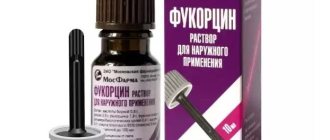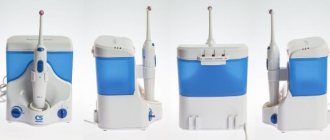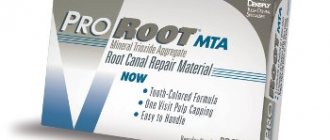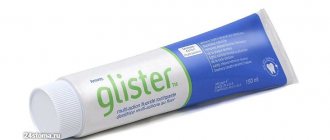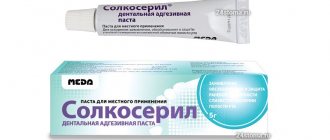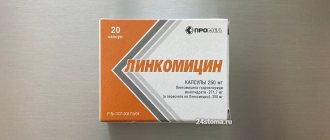Release form
- Ketorolac tablets are white-coated, biconvex. 10 such tablets in contour packaging; 1,2, 5 or 10 packs in a paper pack. 10 such tablets in a polymer jar; one such jar in a pack of paper. 25 of these tablets in contour packaging; 2 or 4 packs in a paper pack.
- Ketorolac (i.v., i.m.) in ampoules contains a transparent solution of white-yellow color. 1 or 2 ml of this solution in an ampoule; 5 ampoules in contour packaging, 1 or 2 such packages in a cardboard box. 1 or 2 ml of this solution in an ampoule; 10 such ampoules in a cardboard box.
Pharmacodynamics and pharmacokinetics
Pharmacodynamics
It has a strong analgesic effect, moderate antipyretic and anti-inflammatory effect.
They are associated with indiscriminate inhibition of the enzyme cyclooxygenase of the first and second types in peripheral tissues, resulting in inhibition of the synthesis of prostaglandins - mediators of pain, inflammation and thermoregulation.
The drug has no effect on opioid receptors, does not cause addiction, does not depress breathing, and does not have a sedative or anxiolytic effect.
The strength of the analgesic effect is comparable to morphine and superior to other drugs in its group.
After oral administration, the analgesic effect is recorded after one hour, the greatest effect – after one to two hours. After an intramuscular injection, the onset of the analgesic effect is recorded after 30 minutes, the greatest effect – after one to two hours.
Pharmacokinetics
When taken internally and when administered by injection, it is actively absorbed from the intestines and tissues. The maximum concentration in the blood is recorded after 40-50 minutes, both after oral administration and after intramuscular injection. Eating does not affect absorption. Plasma protein binding is about 99%.
The half-life is approximately 6 hours. 90% of the dose is excreted by the kidneys, in its original form - 60%; the remaining amount is excreted through the digestive tract.
Ketorolac solution d/iv and intramuscular injection 30 mg/ml 1 ml No. 10
Compound
Active substance: ketorolac trometamol (ketorolac tromethamine) - 30 mg. Excipients: ethanol 95% (in terms of 100% substance) - 100 mg, sodium chloride - 4.35 mg, hydrochloric acid solution 1M or sodium hydroxide solution 1M - to pH 6.9-7.9, water for injection - up to 1 ml.
Pharmacokinetics
When taken orally, ketorolac is well absorbed from the gastrointestinal tract. Bioavailability is 80-100%. Cmax in blood plasma is 0.7-1.1 mcg/ml and is achieved 40 minutes after taking the drug on an empty stomach at a dose of 10 mg. Food rich in fat reduces the Cmax of the drug in the blood and delays its achievement by 1 hour.
With intramuscular administration, absorption is complete and rapid. After intramuscular administration of the drug at a dose of 30 mg, Cmax in blood plasma is 1.74-3.1 mcg/ml, at a dose of 60 mg - 3.23-5.77 mcg/ml. Tmax is respectively 15-73 min and 30-60 min.
After an intravenous infusion of the drug at a dose of 15 mg, Cmax is 1.96-2.98 mcg/ml, at a dose of 30 mg - 3.69-5.61 mcg/ml.
Plasma protein binding - 99%. With hypoalbuminemia, the amount of free substance in the blood increases.
Vd is 0.15-0.33 l/kg.
The time to reach Css when taken orally is 24 hours when used 4 times a day (above subtherapeutic). Css after oral administration at a dose of 10 mg is 0.39-0.79 mcg/ml.
Css with parenteral administration is achieved after 24 hours when used 4 times a day (above subtherapeutic) and with IM administration at a dose of 15 mg is 0.65-1.13 mcg/ml, with IM administration at a dose of 30 mg - 1.29-2.47 mcg /ml; with an intravenous infusion at a dose of 15 mg - 0.79-1.39 mcg/ml, with an intravenous infusion at a dose of 30 mg - 1.68-2.76 mcg/ml.
Poorly passes through the BBB, penetrates the placental barrier (10%).
Excreted in breast milk: when the mother takes 10 mg of ketorolac orally, Cmax in breast milk is achieved 2 hours after taking the first dose and is 7.3 ng/ml, 2 hours after taking the second dose of ketorolac (when using the drug 4 times a day) Cmax is 7.9 ng/ml.
When administered parenterally, it is excreted in breast milk in small quantities.
More than 50% of the administered dose is metabolized in the liver with the formation of pharmacologically inactive metabolites. The main metabolites are glucuronides and p-hydroxyketorolac.
Excreted in urine - 91% (40% in the form of metabolites), in feces - 6%. Not excreted by hemodialysis.
After oral administration, T1/2 in patients with normal renal function is 2.4-9 hours (average 5.3 hours).
After intramuscular administration of 30 mg T1/2 - 3.5-9.2 hours, after intravenous administration of 30 mg T1/2 - 4-7.9 hours.
The total clearance with intramuscular injection of 30 mg is 0.023 l/kg/h, with intravenous infusion of 30 mg - 0.03 l/kg/h.
In patients with renal failure, the Vd of the drug may increase by 2 times, and the Vd of its R-enantiomer by 20%. With a plasma creatinine concentration of 19-50 mg/l with intramuscular administration of 30 mg of the drug, the total clearance is 0.015 l/kg/h.
In patients with impaired renal function with a plasma creatinine concentration of 19-50 mg/l (168-442 µmol/l), T1/2 is 10.3-10.8 hours, with more severe renal failure - more than 13.6 hours.
Liver function has no effect on T1/2.
In elderly patients, the total clearance when administered intramuscularly at a dose of 30 mg is 0.019 l/kg/h. T1/2 lengthens in elderly patients and shortens in young ones.
Indications for use
Pain syndrome of severe and moderate severity: injuries, toothache, pain in the postoperative period, cancer, myalgia, arthralgia, neuralgia, radiculitis, dislocations, sprains, rheumatic diseases.
Intended for symptomatic therapy, reducing pain and inflammation at the time of use, does not affect the progression of the disease.
Contraindications
Hypersensitivity to ketorolac or to other components of the drug, complete or incomplete combination of bronchial asthma, recurrent polyposis of the nose and paranasal sinuses, intolerance to acetylsalicylic acid or other non-steroidal anti-inflammatory drugs (including a history), urticaria, rhinitis caused by taking non-steroidal anti-inflammatory drugs medications (history), dehydration.
Intolerance to pyrazolone-type drugs, hypovolemia (regardless of the cause), bleeding or a high risk of its development, condition after coronary artery bypass surgery, confirmed hyperkalemia, inflammatory bowel diseases.
Erosive and ulcerative lesions of the gastrointestinal tract in the acute stage, peptic ulcers, hypocoagulation (including hemophilia).
Severe liver and/or renal failure (creatinine clearance less than 30 ml/min).
Hemorrhagic stroke (confirmed or suspected), hemorrhagic diathesis, hematopoiesis disorder, intracranial hemorrhage or suspicion of it.
Concomitant use with probenecid, pentoxifylline, acetylsalicylic acid and other NSAIDs (including cyclooxygenase-2 inhibitors), lithium salts, anticoagulants, including warfarin and heparin is not recommended.
Pregnancy, childbirth and breastfeeding.
Children under 16 years of age (safety and effectiveness of use have not been established).
The drug is not used for pain relief before and during surgery due to the high risk of bleeding, as well as for the treatment of chronic pain.
Directions for use and doses
Intravenously, intramuscularly.
Injected deep into the muscle, slowly (or intravenously in a stream) for at least 15 seconds in the minimum effective doses, in a minimally short course.
Single doses for a single intramuscular or intravenous administration:
- adults under 65 years of age and children over 16 years of age - 10-30 mg, depending on the severity of the pain syndrome;
- adults over 65 years of age or with impaired renal function - 10-15 mg.
Doses for repeated parenteral administration:
intramuscularly
- adults under 65 years of age and children over 16 years of age are given 10-60 mg (0.3-2 ml) for the first injection, then 10-30 mg (0.3-1 ml) every 6 hours (usually 30 mg ( 1 ml) every 6 hours);
- adults over 65 years of age or with impaired renal function - 10-15 mg (0.3-0.5 ml) every 4-6 hours.
intravenously
- adults under 65 years of age and children over 16 years of age are injected with 10-30 mg (0.3-1 ml), then 10-30 mg (0.3-1 ml) every 6 hours, with continuous infusion using an infusion pump the initial dose is 30 mg (1 ml), and then the infusion rate is 5 mg/h;
- adults over 65 years of age or with impaired renal function are given a bolus of 10-15 mg (0.3-0.5 ml) every 6 hours.
The maximum daily dose for adults under 65 years of age and children over 16 years of age should not exceed 90 mg (3 ml), and for adults over 65 years of age or with impaired renal function - 60 mg (2 ml) for both intramuscular and intravenous routes of administration .
Continuous intravenous infusion should not last more than 24 hours.
The maximum duration of treatment should not exceed 2 days.
When switching from parenteral administration of the drug to oral administration, the total daily dose of both dosage forms on the day of transfer should not exceed 90 mg for adults under 65 years of age and children over 16 years of age and 60 mg for adults over 65 years of age or with impaired renal function. In this case, the dose of the drug in tablets on the day of transition should not exceed 30 mg.
Storage conditions
In a place protected from light, at a temperature not exceeding 25 ° C. Do not freeze.
Keep out of the reach of children.
Best before date
3 years. Do not use after expiration date.
special instructions
- When used together with other NSAIDs, fluid retention, cardiac decompensation, and arterial hypertension may occur.
- To reduce the risk of developing NSAID gastropathy, antacids, misoprostol, and omeprazole are prescribed.
- The effect on platelet aggregation lasts for 24-48 hours.
- Hypovolemia increases the risk of developing adverse reactions from the kidneys.
- If necessary, can be prescribed in combination with opioid analgesics.
- Do not use simultaneously with paracetamol for more than 5 days.
- In patients with blood coagulation disorders, it is used only with constant monitoring of the platelet count, especially in the postoperative period, which requires careful monitoring of hemostasis.
Description
NSAIDs with a pronounced analgesic effect.
Dosage form
Solution for intravenous and intramuscular administration in the form of a clear, light yellow liquid.
Use in children
Contraindication: children and adolescents under 16 years of age (efficacy and safety have not been established).
Pharmacodynamics
NSAIDs have a pronounced analgesic (pain-relieving) effect, and also have anti-inflammatory and moderate antipyretic effects.
The mechanism of action is associated with non-selective inhibition of the activity of the enzymes COX-1 and COX-2, mainly in peripheral tissues, resulting in inhibition of the biosynthesis of prostaglandins - modulators of pain sensitivity, inflammation and thermoregulation. Ketorolac is a racemic mixture of R(+) and S(-)-enantiomers, with the analgesic (pain-relieving) effect due to the S(-)-enantiomer.
Ketorolac does not affect opioid receptors, does not depress respiration, does not cause drug dependence, and does not have a sedative or anxiolytic effect.
The strength of the analgesic (pain-relieving) effect is comparable to morphine and significantly superior to other NSAIDs.
After oral administration, the onset of analgesic (pain-relieving) effect is observed after 1 hour, the maximum effect is achieved after 2-3 hours.
After intramuscular administration, the onset of analgesic (pain-relieving) effect is noted after 0.5 hours, the maximum effect is achieved after 1-2 hours.
Side effects
From the digestive system: often (especially in elderly patients over 65 years of age with a history of erosive and ulcerative lesions of the gastrointestinal tract) - gastralgia, diarrhea; less often - stomatitis, flatulence, constipation, vomiting, feeling of fullness in the stomach; rarely - loss of appetite, nausea, erosive and ulcerative lesions of the gastrointestinal tract (including with perforation and/or bleeding - abdominal pain, spasm or burning in the epigastric region, melena, vomiting with blood or coffee grounds, nausea, heartburn), cholestatic jaundice, hepatitis, hepatomegaly, acute pancreatitis.
From the urinary system: rarely - acute renal failure, lower back pain, hematuria, azotemia, hemolytic-uremic syndrome (hemolytic anemia, renal failure, thrombocytopenia, purpura), frequent urination, increased or decreased urine volume, nephritis, edema of renal origin.
From the nervous system: often - headache, dizziness, drowsiness; rarely - aseptic meningitis (including fever, severe headache, convulsions, stiffness of the neck and/or back muscles), hyperactivity (including mood changes, anxiety), hallucinations, depression, psychosis.
From the cardiovascular system: less often - increased blood pressure; rarely - fainting.
From the respiratory system: rarely - bronchospasm, dyspnea, rhinitis, pulmonary edema, laryngeal edema (including shortness of breath, difficulty breathing).
From the senses: rarely - hearing loss, ringing in the ears, visual impairment (including blurred visual perception).
From the hematopoietic system: rarely - anemia, eosinophilia, leukopenia.
From the blood coagulation system: rarely - bleeding from a postoperative wound, nosebleeds, rectal bleeding.
From the skin: less often - skin rash (including maculopapular), purpura; rarely - exfoliative dermatitis (including fever with or without chills, redness, thickening or flaking of the skin, swelling and/or tenderness of the tonsils), urticaria, Stevens-Johnson syndrome, Lyell's syndrome.
Allergic reactions: rarely - anaphylaxis or anaphylactoid reactions (including discoloration of the facial skin, skin rash, urticaria, itching of the skin, tachypnea or dyspnea, swelling of the eyelids, periorbital edema, shortness of breath, difficulty breathing, heaviness in the chest, wheezing ).
Local reactions: less often - burning or pain at the injection site.
Other: often - swelling (including of the face, legs, ankles, fingers, feet), weight gain; less often - increased sweating; rarely - swelling of the tongue, fever.
Use during pregnancy and breastfeeding
The use of the drug is contraindicated during pregnancy, during childbirth and during breastfeeding.
Interaction
- The simultaneous use of ketorolac with acetylsalicylic acid or other NSAIDs, calcium preparations, corticosteroids, ethanol, corticotropin can lead to the formation of gastrointestinal ulcers and the development of gastrointestinal bleeding.
- Co-administration with paracetamol increases nephrotoxicity, and with methotrexate - hepato- and nephrotoxicity.
- Co-administration of ketorolac and methotrexate is possible only when using low doses of the latter (monitor the concentration of methotrexate in the blood plasma).
- With the use of ketorolac, the clearance of methotrexate and lithium may decrease and the toxicity of these substances may increase.
- Co-administration with indirect anticoagulants, heparin, thrombolytics, antiplatelet agents, cefoperazone, cefotetan and pentoxifylline increases the risk of bleeding.
- Reduces the effect of antihypertensive and diuretic drugs (the synthesis of prostaglandins in the kidneys decreases).
- When used simultaneously with opioid analgesics, the doses of the latter can be significantly reduced, because their effect is enhanced.
- When used simultaneously, it enhances the hypoglycemic effect of insulin and oral hypoglycemic drugs (dose recalculation is necessary).
- Co-administration with valproic acid causes disruption of platelet aggregation.
- Increases the plasma concentration of verapamil and nifedipine.
- When prescribed with other nephrotoxic drugs (including gold preparations), the risk of developing nephrotoxicity increases.
- Probenecid and drugs that block tubular secretion reduce the clearance of ketorolac and increase its concentration in the blood plasma.
- Myelotoxic drugs increase the manifestations of hematotoxicity of the drug.
- Pharmaceutically incompatible with tramadol solution and lithium preparations.
Overdose
Symptoms: abdominal pain, nausea, vomiting, erosive and ulcerative lesions of the gastrointestinal tract, impaired renal function, metabolic acidosis.
Treatment: there is no specific antidote; gastric lavage, administration of adsorbents (activated carbon) and symptomatic therapy (maintaining vital body functions) are recommended. Ketorolac is not sufficiently eliminated by dialysis.
Impact on the ability to drive vehicles and operate machinery
Since a significant proportion of patients using ketorolac develop side effects from the central nervous system (drowsiness, dizziness, headache), it is recommended to avoid performing work that requires increased attention and quick reaction (driving vehicles, working with machinery).
Indications for use
Moderate to severe pain syndrome :
- toothache;
- pain of traumatic etiology;
- pain in the postoperative and postpartum period;
- pain due to cancer ;
- dislocations , sprains ;
- arthralgia , neuralgia , myalgia , radiculitis ;
- rheumatic diseases.
Used for symptomatic therapy, relief of inflammation and pain at the time of use, does not affect the development of the disease.
Directions for use and doses
The drug must be administered intravenously over at least 15 seconds (for dosage forms containing ethanol).
Intramuscularly administered slowly, deep into the muscle, in minimally effective doses, selected in accordance with the intensity of pain and the patient’s response. If necessary, additional opioid analgesics can be prescribed at the same time in reduced doses.
Single doses for a single intramuscular or intravenous administration:
- patients 16-64 years old with a body weight of more than 50 kg - 10-30 mg, depending on the severity of the pain syndrome;
- patients 16-64 years old with body weight less than 50 kg, patients over 65 years old or with impaired renal function - 10-15 mg.
Doses for repeated parenteral administration:
Intramuscular:
-patients 16-64 years old with a body weight of more than 50 kg are given 10-30 mg for the first injection, then 10-30 mg every 4-6 hours;
- with a body weight of less than 50 kg, patients over 65 years of age or with impaired renal function - 10-15 mg every 4-6 hours.
Intravenously:
-patients 16-64 years old with a body weight of more than 50 kg are injected with 10-30 mg, then 10-30 mg every 6 hours, with continuous infusion using an infusion pump, the initial dose is 30 mg, and then the infusion rate is 5 mg /hour;
-patients 16-64 years old with body weight less than 50 kg, patients over 65 years old or with impaired renal function are administered a bolus of 10-15 mg every 6 hours.
The maximum daily dose for patients 16-64 years old with a body weight of more than 50 kg should not exceed 90 mg, and for patients 16-64 years old with a body weight less than 50 kg, over 65 years old or with impaired renal function - 60 mg as for intramuscular, and intravenous routes of administration.
Continuous intravenous infusion should not last more than 24 hours.
When administered parenterally, the duration of treatment should not exceed 2 days.
When switching from parenteral administration of the drug to oral administration, the total daily dose of both dosage forms on the day of transfer should not exceed 90 mg for patients 16-64 years old with a body weight of more than 50 kg and 60 mg for patients 16-64 years old with a body weight less than 50 kg, over 65 years of age or with impaired renal function. In this case, the dose of the drug in tablets on the day of transition should not exceed 30 mg.
Contraindications
- Combination (complete or incomplete) of bronchial asthma , intolerance to aspirin (or other drugs in this group) and recurrent polyposis of the paranasal sinuses and nose .
- Hypersensitivity.
- Hypovolemia.
- Intolerance pyrazolone drugs .
- Exacerbation of erosive and ulcerative diseases of the gastrointestinal tract.
- Hypocoagulation , high risk of bleeding.
- Severe kidney or liver damage , liver disease.
- Condition after coronary artery bypass surgery .
- Hyperkalemia.
- 3rd trimester of pregnancy, childbirth and lactation.
- Inflammatory intestinal lesions.
- Age less than 16 years.
Use with caution for: bronchial asthma , alcoholism , chronic heart failure, cholecystitis , postoperative period, arterial hypertension , edema syndrome, kidney damage, active hepatitis, cholestasis, systemic lupus erythematosus, sepsis, coronary heart disease, dyslipidemia , cerebrovascular diseases, peripheral damage arteries, diabetes mellitus, ulcerative lesions of the digestive tract in the past, H. pylori infection, prolonged use of other non-steroidal anti-inflammatory drugs , old age, 1st and 2nd trimesters of pregnancy.
Ketorolac in the relief of renal colic
Ketorolac is widely used for the successful relief of renal colic. This is due to the fact that this drug, by blocking the synthesis of prostaglandins in the kidney, reduces urinary tract motility and spasm, reducing pressure in the urinary tract, as well as reducing renal blood flow [18]. It has been shown that intravenous administration of 30 mg of ketorolac for renal colic gives the same analgesic effect as intravenous administration of 2.5 g of metamizole in combination with antispasmodics with fewer side effects [19]. According to a double-blind randomized study that included 57 patients with renal colic, the analgesic activity of ketorolac (30 mg intramuscularly) and diclofenac (75 mg intramuscular) was comparable in severity and duration [20]. Similar data were obtained in another double-blind controlled study [21]. In a study involving 48 patients with renal colic, intramuscular administration of 30 mg ketorolac was more effective than subcutaneous administration of tramadol at a dose of 1 mg/kg body weight [22].
According to a multicenter, double-blind, randomized trial that included patients 18–65 years of age with moderate to severe renal colic, ketorolac was as effective as meperedine for pain relief, but caused less functional impairment. To relieve pain, patients were initially treated with meperidine at a dose of 50 mg intravenously, then 25–50 mg every 15 minutes for complete pain relief. Another group of patients first received ketorolac (30 mg intravenously) or placebo, and then the injections were repeated every 15 minutes as needed. Overall, 64% of patients receiving meperidine and 72% of patients receiving ketorolac achieved successful pain relief at 60 minutes; 10% of patients after using meperidine and 44% of patients after ketorolac were able to resume normal activity within an hour [23].
Side effects
- Reactions from the circulatory system: changes in pressure, bradycardia , rapid heartbeat , fainting.
- Reactions from the digestive system: abdominal pain, diarrhea, flatulence, nausea, constipation , vomiting, thirst , gastritis, stomatitis , erosive and ulcerative changes in the digestive tract, liver damage.
- Reactions from the nervous system: paresthesia , anxiety, sleep disturbances , drowsiness , depression , visual disturbances, dizziness , movement disorders.
- Reactions from the respiratory system: attacks of suffocation.
- Reactions from the genitourinary system: oliguria , increased urination, polyuria, proteinuria, hematuria, azotemia, acute renal failure .
- Reactions from the hematopoietic system: nosebleeds, anemia , eosinophilia, thrombocytopenia.
- Metabolic reactions: edema , hypokalemia , increased creatinine or urea in the blood, hyponatremia.
- Allergic reactions: hemorrhagic rash, Stevens-Johnson syndrome , urticaria , Quincke's edema , Lyell's syndrome , anaphylactic shock, bronchospasm, myalgia .
- Other reactions: fever .
- Local reactions: pain in the injection area.
Use of ketorolac for injury and back pain
Ketorolac can be considered a drug of choice for the relief of intense pain, especially in case of injury, however, its short-term use is also possible during exacerbation of chronic pain in patients with degenerative diseases of the spine, rheumatoid arthritis, osteoarthritis, etc. According to a double-blind prospective study, among patients with severe back pain, the effectiveness of ketorolac was comparable to the effects of meperedine, and the sedation and side effects were less pronounced [15]. A multicenter clinical trial evaluated the analgesic effects of ketorolac for back pain and found it to be comparable to those of codeine with significantly fewer adverse events [16].
A clinical trial of 148 patients hospitalized for closed limb injuries received intravenous ketorolac (30 mg) or morphine (15 mg). With complete immobility of the affected limb, ketorolac and morphine had a similar analgesic effect, and with small movements of the affected limb associated with the manipulations, the effectiveness of ketorolac was even higher. The incidence of side effects when using ketorolac was 16 times lower than when using morphine, which more often caused nausea, vomiting, and phlebitis. The authors concluded that patients receiving ketorolac required less attention from nursing and physician staff [17].
Instructions for use of Ketorolac (Method and dosage)
Ketorolac tablets instructions for use recommend using them orally. Single dose - 10 mg. The next time you use it, you can take 10 mg up to four times a day; the highest daily dose should not be more than 40 mg. The duration of treatment is up to 5 days.
Ketorolac injections instructions for use recommend that when administered intramuscularly, stick to a single dose of up to 30 mg once every 4-6 hours. The highest dose is 90 mg (three ampoules) per day. The longest duration of use of the drug is up to 2 days.
Use of ketorolac among postoperative patients
When considering pain management in postoperative patients, ketorolac was in some cases more effective than morphine and meperedine [9], and side effects such as nausea and vomiting were less common with its use. When compared with other NSAIDs, ketorolac demonstrated a more pronounced analgesic effect for postoperative patients. Thus, according to one study, the use of ketorolac (30 mg intravenously) in postoperative patients reduced the need for additional prescription of narcotic analgesics more than the use of diclofenac or ketoprofen [10]. According to another study, a single injection of 30 mg of ketorolac or 75 mg of diclofenac did not provide sufficient analgesia in women undergoing laparoscopic sterilization, but in 60% of cases, repeated injection of the analgesic reduced pain [11]. Tolerability of both drugs was quite good, but pain at the injection site of ketorolac persisted for 15–30 minutes, and at the injection site of diclofenac for 8–12 hours. A study by J. Forrest et al., which included 11,245 patients who underwent surgery, showed that ketorolac therapy in the postoperative period is as safe as treatment with diclofenac or ketoprofen. With a single intravenous administration, side effects turned out to be mild and transient; possible drowsiness, pain at the injection site, increased sweating, nausea, headache, etc. [12].
In order to study the analgesic effect of ketorolac in comparison with placebo and opiates, which were used to relieve pain in postoperative patients, an analysis was conducted of journal articles published in English in 1986-2001 and the results of randomized controlled trials. At the same time, the frequency of side effects and the quality of pain relief when using ketorolac were assessed. The following data were obtained: when using ketorolac, the dose of opioid analgesics was reduced by an average of 36% (range from 0 to 73%). Better pain relief was achieved among patients who used ketorolac in combination with opiates. The risk of side effects from ketorolac increased with high doses, with treatment durations exceeding 5 days, or in patients at risk (for example, the elderly) [13].
In an analysis of 13 randomized controlled trials that assessed the analgesic effect of single doses of ketorolac and opioids in postoperative patients, the effects of different doses of ketorolac (30 and 60 mg) were examined. The following conclusions were drawn: a single dose of ketorolac is an effective adjunct in reducing postoperative pain and postoperative nausea and vomiting. There were no significant differences in the analgesic effect obtained when using 30 and 60 mg of ketorolac [14].
Interaction
Use with other drugs from the same group (OKPD - non-steroidal anti-inflammatory drugs ), glucocorticosteroids, corticotropin, ethanol, calcium supplements increases the risk of ulceration of the gastrointestinal tract and bleeding from the stomach and intestines.
Co-administration with heparin , coumarin derivatives, thrombolytics ( Streptokinase, Alteplase ), cephalosporins, antiplatelet agents, valproic acid and aspirin increases the risk of bleeding.
Ketorolac weakens the effect of diuretic and antihypertensive drugs.
Use together with methotrexate increases hepato- and nephrotoxicity .
Ketorolac enhances the effect of narcotic analgesics.
Myelotoxic drugs enhance the hematotoxic effect of the drug.
special instructions
Before prescribing the drug, it is necessary to find out about the presence of a previous allergy to other non-steroidal anti-inflammatory drugs .
Hypovolemia increases the risk of developing kidney toxicity.
If necessary, Ketorolac can be prescribed with narcotic analgesics . The drug should not be used for premedication or to maintain anesthesia.
Do not use the product simultaneously with paracetamol for more than 5 days.
To reduce the risk of developing gastropathy , misoprostol, antacids, and omeprazole are prescribed simultaneously .
To reduce the risk of side effects, the lowest effective dose should be used for the shortest possible course.
During treatment with the drug, you must be careful when driving.
Safety of using ketorolac
The results, obtained from an analysis of post-marketing surveillance of more than 20 thousand patients, showed that the overall risk of developing gastrointestinal complications or bleeding associated with parenteral ketorolac therapy was only slightly higher than with the use of opiates. However, this risk increased markedly when high doses were used for more than 5 days, especially in the elderly.
Another side effect is acute renal failure, which can also occur during treatment with ketorolac, and is usually reversible and regresses after discontinuation of the drug [8]. Indeed, the literature describes cases of the development of acute renal failure after injection of ketorolac [32, 33], including a single one [33]. According to other data, no nephrotoxic effect of ketorolac was detected on healthy individuals who underwent donor nephrectomy [34]. In a multicenter study that included more than 20 thousand patients, the incidence of acute renal failure was 1.1% during ketorolac therapy. It has been shown that the risk of developing renal failure is low with a duration of treatment with ketorolac of less than 5 days, but increases with longer use [35]. A meta-analysis of the effects of NSAIDs (including ketorolac) on the renal function of postoperative patients showed a statistically significant, but clinically unexpressed, transient impairment of renal function.
As a result, the authors concluded that patients with normal renal function should not avoid NSAIDs for fear of postoperative renal dysfunction [36]. Other unwanted effects of ketorolac may be related to its effect on blood clotting. According to some authors, intravenous administration of ketoprofen or ketorolac, or diclofenac causes reversible platelet dysfunction, however, during therapy with ketorolac this effect lasted the longest (within 24 hours after injection). Other authors do not identify an increase in the risk of hematoma formation after major surgery associated with the use of ketorolac [37, 38]. According to a study conducted by García Rodríguez, the risk of gastric bleeding with ketorolac is higher than with other NSAIDs [39]. Patients receiving ketorolac had a 5-fold greater risk of bleeding than those not receiving this treatment; when using other NSAIDs, the risk of bleeding increased 4.4 times. This led the authors to warn practitioners against routine use of ketorolac.
In addition, the risk of postoperative bleeding associated with the use of ketorolac was examined. An increased risk of postoperative wound bleeding and gastric bleeding was found; the risk increased with increasing drug dose and treatment duration beyond 5 days. Thus, in order to avoid the development of serious complications, ketorolac, according to many authors, should be used in the lowest dose that allows pain control and for as short a period as possible [40].
Analogs
Level 4 ATC code matches:
Voltaren
Rapten
Zerodol
Dickloberl Retard
Dikloberl N 75
Dicloberl
Ketanov
Dolak
Panoxen
Naklofen Duo
Naklofen
Olfen-100
Olfen-75
Neurodiclovit
Nizilat
Fanigan
Aertal
Methindol retard
Ortofen
Ketarolac analogues: Ketanov, Ketorol, Ketonort, Ketorolac-Credofarm and others.
Ketarolac price, where to buy
In Russia, the price of Ketorolac No. 10 ampoules is 99-101 rubles, the price of Ketorolac No. 20 tablets is approximately 18 rubles. In Ukraine, ampoules of drug No. 10 cost 54-75 hryvnia, tablets No. 10 cost 9-25 hryvnia.
- Online pharmacies in RussiaRussia
- Online pharmacies in UkraineUkraine
- Online pharmacies in KazakhstanKazakhstan
ZdravCity
- Ketorolac solution for intravenous and intramuscular administration.
30mg/ml amp. 1ml 10 pcs. Ozone LLC 75 rub. order - Ketorolac tab. p.p.o. 10mg 20pcs JSC Tatkhimfarmpreparaty
34 RUR order
- Ketorolac solution for intravenous and intramuscular administration. 30mg/ml amp. 1ml 10 pcs. Biosynthesis JSC
69 RUR order
- Ketorolac-solopharm solution for intravenous and intramuscular injection 30 mg/ml (amp) 1 ml No. 10 Grotex LLC RU
86 rub. order
- Ketorolac-Vertex tab. 10 mg 20 pcs. Vertex AO
33 rub. order
Pharmacy Dialogue
- Ketorolac (amp. 30 mg/ml 1 ml No. 10) Sintez (Kurgan) OJSC
92 rub. order
- Ketorolac (tab.p.pl/vol. 10mg No. 28)Update of PFC CJSC
73 rub. order
- Ketorolac (amp. 30 mg/ml 1 ml 2x5 No. 10) Ellara LLC
52 RUR order
- Ketorolac (amp. 30 mg/ml 1 ml No. 10) Welfarm LLC
57 RUR order
- Ketorolac (amp. 30 mg/ml 1 ml No. 10) Biosynthesis OJSC
54 RUR order
show more
PaniPharmacy
- KETOROLAC ampoule Ketorolac r/r d/in.
3% 1ml. No. 10 Ukraine, Health LLC 99 UAH. order - KETOROLAC tablets Ketorolac tablets. 10mg No. 10 Ukraine, Health LLC
18 UAH order
show more
Pharmacokinetics
Absorption when administered intramuscularly is complete and rapid. After intramuscular administration of 30 mg of the drug, the maximum concentration in blood plasma (Cmax) is 1.74-3.1 μg/ml; 60 mg – 3.23-5.77 µg/ml, time to reach maximum concentration, respectively – 15-73 minutes and 30-60 minutes; the maximum concentration after intravenous infusion of 15 mg is 1.96-2.98 mcg/ml, 30 mg is 3.69-5.61 mcg/ml. The time to reach equilibrium concentration (Css) with parenteral administration is 24 hours when administered 4 times a day (above the subtherapeutic dose) and with intramuscular administration is 15 mg - 0.65-1.13 mcg/ml, 30 mg - 1.29- 2.47 mcg/ml, with intravenous infusion of 15 mg – 0.79-1.39 mcg/ml, 30 mg – 1.68-2.76 mcg/ml.
99.2% of the drug binds to blood plasma proteins and with hypoalbuminemia the amount of free substance in the blood increases.
The volume of distribution is 0.15-0.33 l/kg. In patients with renal failure, the volume of distribution of the drug may increase by 2 times, and the volume of distribution of its R-enantiomer by 20%. Poorly passes through the blood-brain barrier and penetrates the placenta (10%). Found in small quantities in breast milk.
More than 50% of the administered dose is metabolized in the liver with the formation of pharmacologically inactive metabolites. The main metabolites are glucuronides, which are excreted by the kidneys, and p-hydroxyketorolac, which is excreted 91% by the kidneys, 6% through the intestines.
The half-life (T1/2) in patients with normal renal function averages 5.3 hours (3.5-9.2 hours after intramuscular administration of 30 mg and 4-7.9 hours after intravenous administration of 30 mg). The half-life is prolonged in elderly patients and shortened in young patients. Liver function does not affect the half-life. In patients with impaired renal function with a plasma creatinine concentration of 19-50 mg/l (168-442 µmol/l), the half-life is 10.3-10.8 hours, with more severe renal failure - more than 13.6 hours.
The total clearance is with intramuscular administration of 30 mg - 0.023 l/kg/h (0.019 l/kg/h in elderly patients), intravenous administration of 30 mg - 0.03 l/kg/h; in patients with renal failure with a plasma creatinine concentration of 19-50 mg/l with intramuscular administration of 30 mg - 0.015 l/kg/h.
Not excreted during hemodialysis.
There is information about the effectiveness of the drug for migraine attacks.


